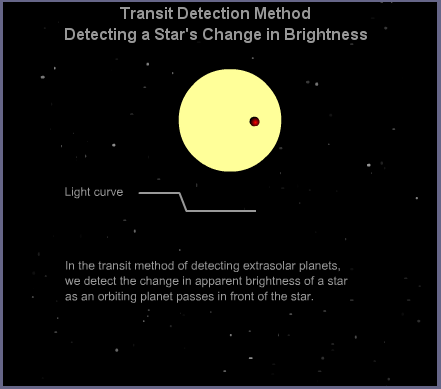
Thanks to Ron Markham for the animation.
 Copyright © Michael Richmond.
This work is licensed under a Creative Commons License.
Copyright © Michael Richmond.
This work is licensed under a Creative Commons License.
You can read a more detailed talk here ...
On March 6, 2009, NASA launched the Kepler satellite which is designed to find hundreds of planets around other stars (in addition to a good deal of other science). How does it look for those planets? And what has it found so far?
Let's find out.
The transit method is pretty easy to explain: if a planet's orbit around its star happens to cause the planet to pass in front of the star from our point of view, then the planet will block a little bit of the Sun's light for a brief time -- a few hours to a day or so.

Thanks to Ron Markham
for the animation.
Of course, this only works if the orbital plane of the planet is tilted just right. It's also a somewhat delicate measurement to make, since most planets are so much smaller than their stars that the dip in brightness is almost always less than one percent. See for yourself in this picture of a genuine transit, as Venus passes in front of our Sun.
However, if one makes careful measurements and uses the right sort of analysis, one can detect these little dips with relatively small telescopes. The first transit was measured by this little telescope:
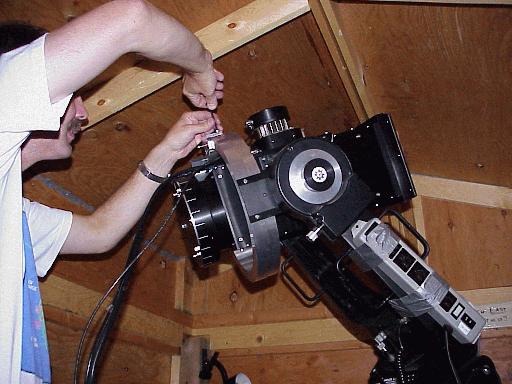
Here in Rochester, the RIT Observatory's 12-inch telescope and SBIG ST-8E CCD camera acquired this light curve of the system called TrES-3
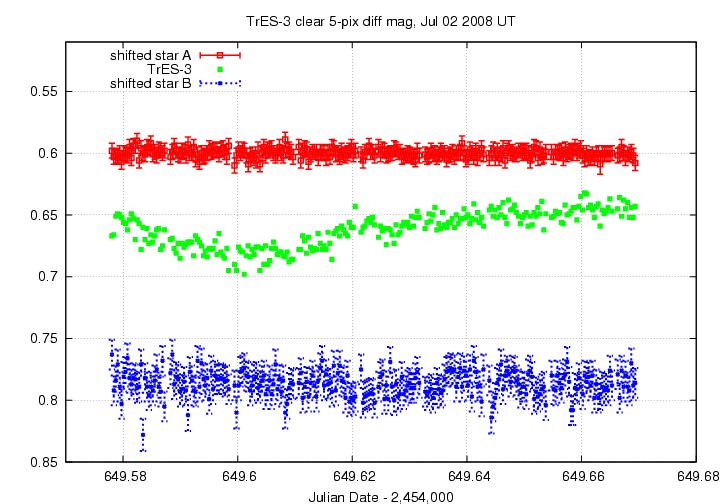
Before Kepler started to look for planets via this transit technique, astronomers had already discovered quite a few using ground-based telescopes. We'll come back to see how Kepler's work compares to this set of planets a little later ....
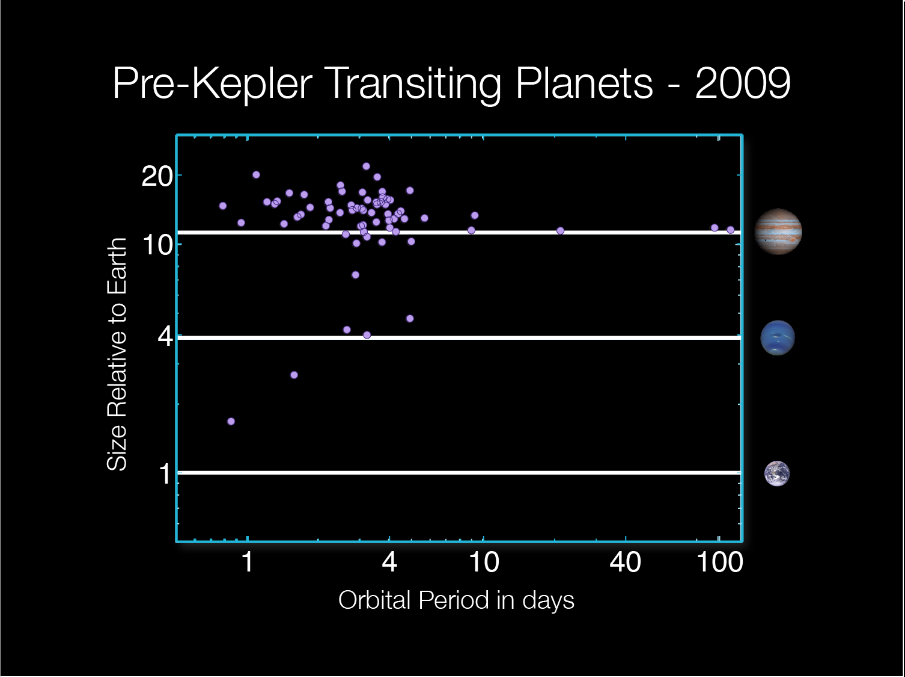
How big is the telescope inside the Kepler satellite? Pretty big: the primary mirror is 1.4 meters in diameter, but it sits behind a clear aperture of only 0.95 meters. So Kepler's aperture is smaller than that of HST, but much larger than those in the telescopes in the MOST (15 cm) or COROT (30 cm) satellites. The telescope sits inside a satellite which is the size of a schoolbus.
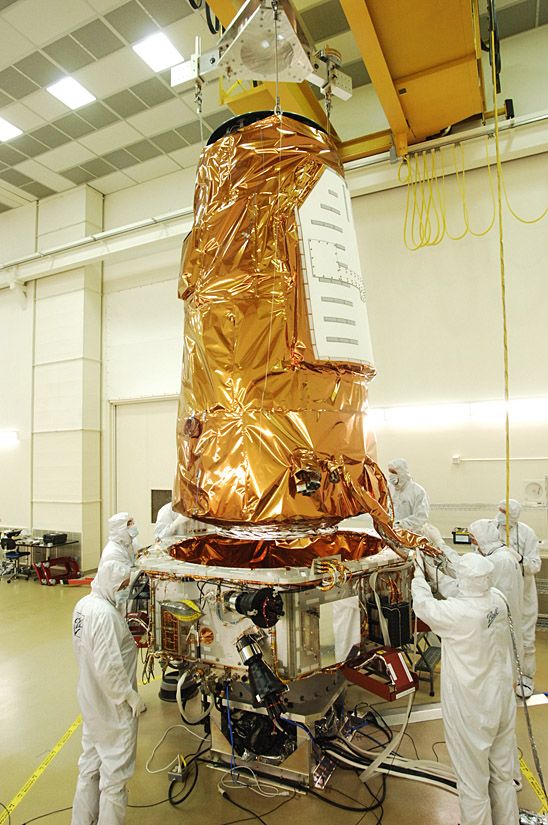
Here is a picture, one of the first-light images returned from the spacecraft in April, 2009.
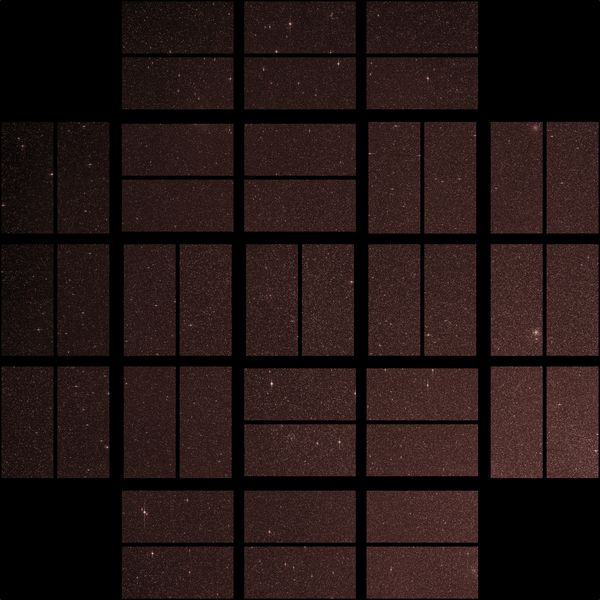
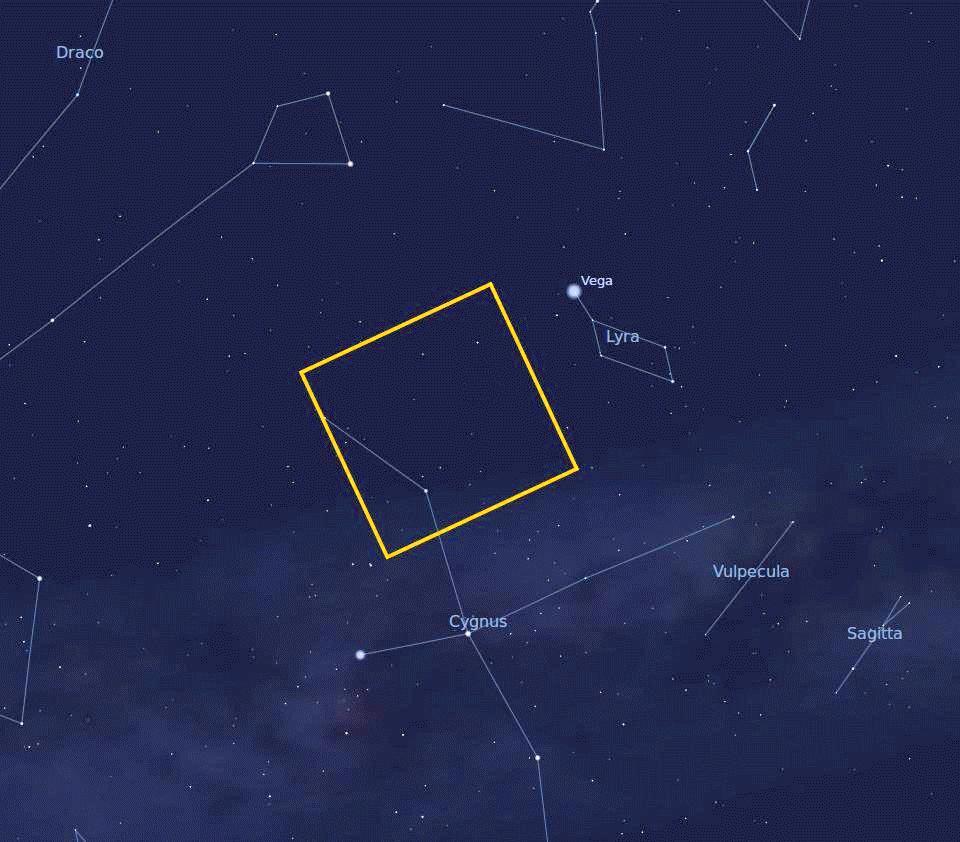
Note that Kepler's spatial resolution is not very fine: each pixel spans about 4 arcseconds. You can see the blockiness in this picture of the star TrES-2 . In addition, the telescope's focus is set so that stars are slightly out-of-focus, which spreads their light out across more pixels and helps prevent saturation.
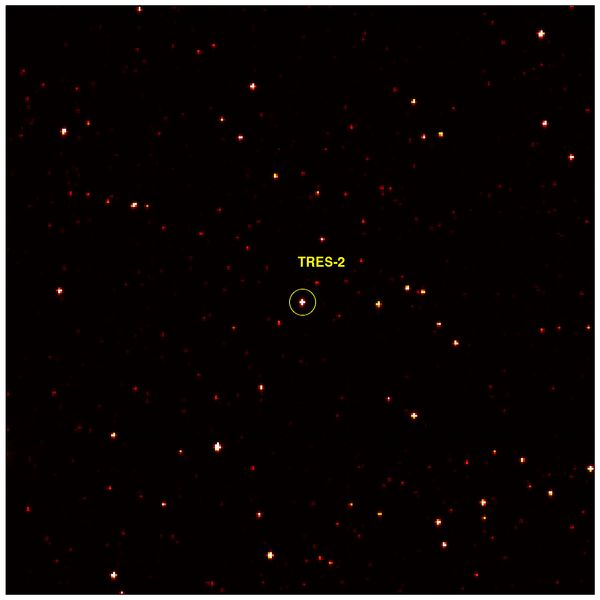
Just how hard is it to detect the slight dimming of a star as a planet passes in front of it? Let's find out -- you can play the part of the Kepler space telescope.
We'll begin with a star like the Sun.

Watch the short movie below and tell me if you can detect the moment when a planet passes in front of the star. Click on the image to start the movie.
Did you see it? I hope so. That planet was pretty big -- much larger than the Earth. In fact, that planet was the size of Jupiter!
Let's try again, this time with a planet the size of the Earth. Click on the image to start the movie.
Gosh, the Earth is so small compared to the Sun that it doesn't block much light at all. If you could not actually see DETAILS of the Sun's disk, but only measure its BRIGHTNESS, do you think you could detect a transit?
Yes, it has. Some of the planets announced in the most recent data release are not only roughly the size of the Earth, but are even at distances from their host stars that are likely to produce roughly Earth-like temperatures.
The most recent official update from Kepler (Feb 2, 2011) announces
Let's take a look first at the confirmed planets discovered so far by Kepler. Note the sizes.
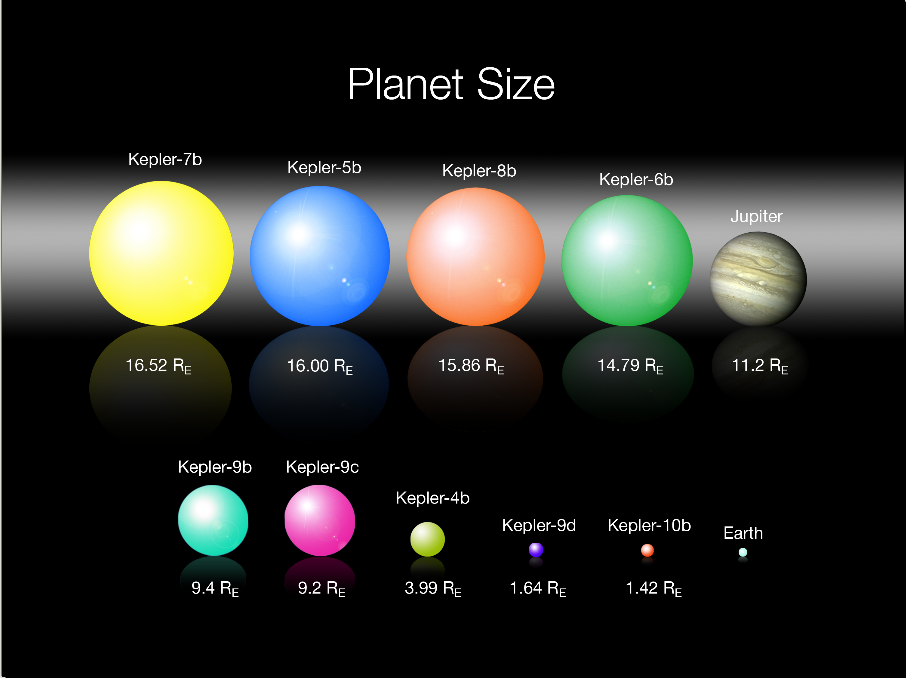
Most of the planet candidates are also pretty big -- much larger than Earth.
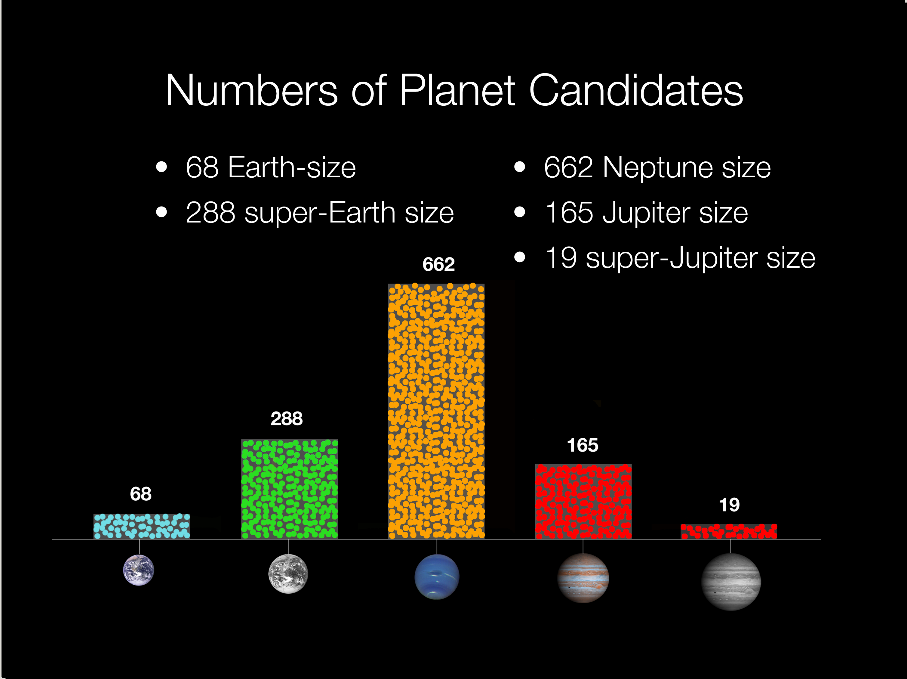
There's a reason that the first planets to be announced are so big.
The Kepler satellite has performed as advertised: it has greatly increased the number of known transiting planets. The figure below shows the previously known planets in purple, and Kepler's candidates in yellow.
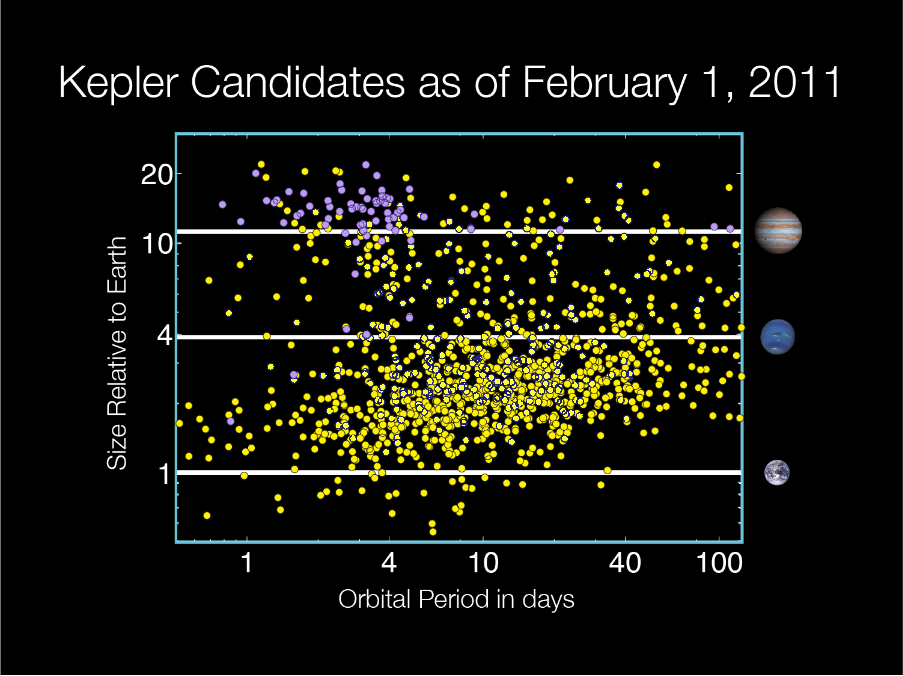
Now, most of these planets are not places you'd want to live: they are way too hot.

The planets are HOT because the easiest planets to find are those which will make many dips over the course of one year; that way, you can be sure that the dips are due to an orbiting planet, and not due to some error in the detector, or some starspot rotating across the disk of a star. If you require a planet to complete at least 3 (or 5 or 7) orbits within around 360 days, then the orbital period must be at most 120 (or 90 or 52) days. In other words, the early results have a bias towards planets with SHORT PERIODS. That means that the planets must be very close to their stars.
And planets which are close to their stars will be HOT.
Still, because Kepler has found so many candidates, a few of them do happen to orbit far enough from their host stars to yield a reasonable temperature at the surface (assuming that the atmosphere doesn't play a large role). There are a few tens of planets within the estimated "habitable zone". One of them is a pretty nice size, too!
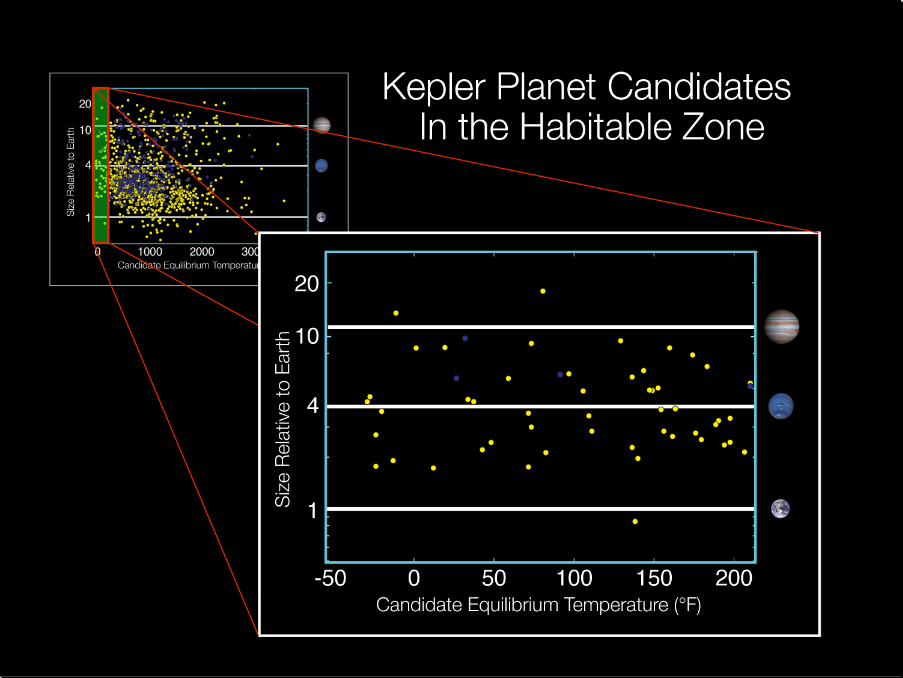
 Copyright © Michael Richmond.
This work is licensed under a Creative Commons License.
Copyright © Michael Richmond.
This work is licensed under a Creative Commons License.